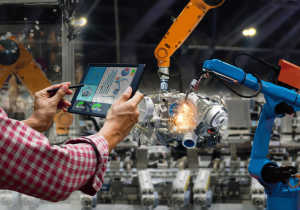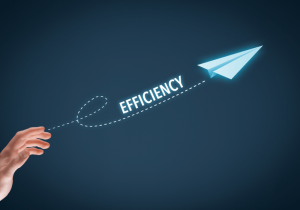Automation is no longer a buzzword—it’s the backbone of modern industrial manufacturing. With advancements in technology such as artificial intelligence (AI), robotics, and the Internet of Things (IoT), businesses are transforming their operations to improve efficiency and maintain a competitive edge. But how did automation evolve to where it is now? What benefits and challenges does it bring? And where is it heading in the future? This blog dives deep into the impact of automation in industrial manufacturing. Whether you’re an automation engineer, a manufacturing manager, or an industry analyst, this discussion will give you insight into past accomplishments, current trends, and the potential future of the manufacturing industry.
 The Historical Evolution of Automation in Manufacturing
The Historical Evolution of Automation in Manufacturing
The history of automation in industrial manufacturing dates back to the late 18th century, during the First Industrial Revolution. This era introduced mechanized systems powered by steam and water, significantly boosting productivity. By the late 19th and early 20th centuries, the Second Industrial Revolution brought electrical energy into factories, automating processes further with assembly lines and electric-powered machinery.
However, it wasn’t until the mid-20th century that we saw the beginnings of modern automation. The first programmable logic controller (PLC), introduced in 1969, revolutionized industrial production by automating repetitive tasks. Then came the introduction of robotics in factories, beginning with Unimate in 1961, the world’s first industrial robot.
Fast forward to today, the industry is in the midst of the Fourth Industrial Revolution, or Industry 4.0, where connected technologies and smart systems are taking automation to unprecedented levels.
Current Automation Technologies Shaping Manufacturing
Today’s manufacturing industry is shaped by innovative automation technologies that are changing the way factories operate. Among these, three stand out as leaders:
1. Artificial Intelligence (AI)
AI-powered systems can analyze vast amounts of data, identify patterns, and make decisions in real time. Machine learning models, a subset of AI, are used to predict demand, optimize supply chains, and even detect defects that human eyes might miss. This level of decision-making allows manufacturers to operate with greater precision.
2. Robotics
Modern industrial robots are smarter, faster, and more versatile than their predecessors. Collaborative robots, or “cobots,” can work alongside human colleagues, increasing efficiency and reducing workplace hazards. For example, automotive manufacturers use cobots to assemble cars while allowing human workers to focus on quality control and complex problem-solving tasks.
3. Internet of Things (IoT)
IoT connects devices and systems across the production floor, enabling real-time monitoring and communication. By integrating IoT sensors into machinery, manufacturers can continuously track performance, predict maintenance needs, and optimize energy consumption.
Key Benefits of Automation in Manufacturing
The adoption of automation comes with numerous advantages that are reshaping the manufacturing landscape:
 1. Improved Efficiency
1. Improved Efficiency
With automation, repetitive and time-consuming tasks are performed faster and more consistently. This enables manufacturers to achieve higher throughput without sacrificing quality. For instance, automated production lines can run 24/7, eliminating downtime caused by manual labour shifts.
2. Cost Reduction
While the initial investment in automation can be high, the long-term cost savings are undeniable. Automated systems reduce the likelihood of errors, minimize material waste, and optimize energy use, ultimately lowering operational expenses.
3. Enhanced Quality
Automation ensures consistency and precision which is difficult to achieve through manual labour. Whether it’s producing identical parts or conducting quality inspections, automated technologies help maintain high standards and reduce defects.
Challenges and Their Solutions
Despite its benefits, automation does have challenges that manufacturers need to address:
1. Job Displacement
One of the concerns surrounding automation is its potential impact on the workforce. Machines often replace repetitive or low-skilled jobs, leading to job displacement. However, this challenge also presents an opportunity. By offering training and upskilling programs to affected employees, companies can help workers transition to roles that require higher technical skills, such as machine operation or system maintenance.
2. High Initial Investment
Implementing automation requires significant upfront capital investment in hardware, software, and trained personnel. To address this, smaller manufacturers can start with incremental automation, upgrading processes step-by-step rather than overhauling the entire system at once. Additionally, government incentives, grants, and tax benefits can help offset costs.
3. Integration and Scalability
Integrating new automation technologies with legacy systems can be a challenge. Companies often struggle to maintain seamless operations during the transition. Collaborating with experienced technology providers that specialize in scalable automation solutions can mitigate this risk.
Future Trends in Automation in Manufacturing
The future of automation in manufacturing looks exciting and innovative. Here’s a glimpse of where the industry is heading:
1. Predictive Maintenance
By leveraging IoT, AI, and real-time analytics, predictive maintenance allows manufacturers to identify equipment issues before they lead to costly breakdowns. For example, sensors embedded in machinery can detect anomalies in performance and alert engineers to address the problem proactively.
2. Digital Twins
A digital twin is a virtual replica of a physical system, such as a production line or a piece of equipment. By simulating real-world conditions, digital twins allow manufacturers to optimize processes, test changes, and predict outcomes—all before making physical adjustments. This technology has the potential to reduce costs, improve performance, and enhance innovation.
3. Greater Human-Machine Collaboration
The rise of cobots and AI systems isn’t about replacing humans—it’s about enhancing their capabilities. Expect to see more technologies designed to work alongside human workers, providing assistance with precision tasks or data-driven decision-making.
4. End-to-End Automation
Automation will extend beyond production to include supply chain management, distribution, and customer support. For instance, AI could optimize inventory levels based on seasonal trends, while automated logistics systems could ensure faster delivery times.
Automation in industrial manufacturing is no longer optional—it’s a necessity for businesses aiming to remain competitive. From AI-powered data analysis to IoT-connected devices and robotics, the tools available today offer unparalleled opportunities for growth, efficiency, and innovation. However, the road to industrial automation isn’t without challenges. By addressing concerns like job displacement and the expense of implementation, manufacturers can ensure that automation serves their industries, employees, and customers in the most constructive way possible.
The future is sure to bring even greater advancements in automation, from predictive maintenance to full-scale digital twins. Organizations prepared to adapt and innovate will reap the rewards of this technological revolution.

 1. Improved Efficiency
1. Improved Efficiency